The Biodiversity Lab: Species Profiles
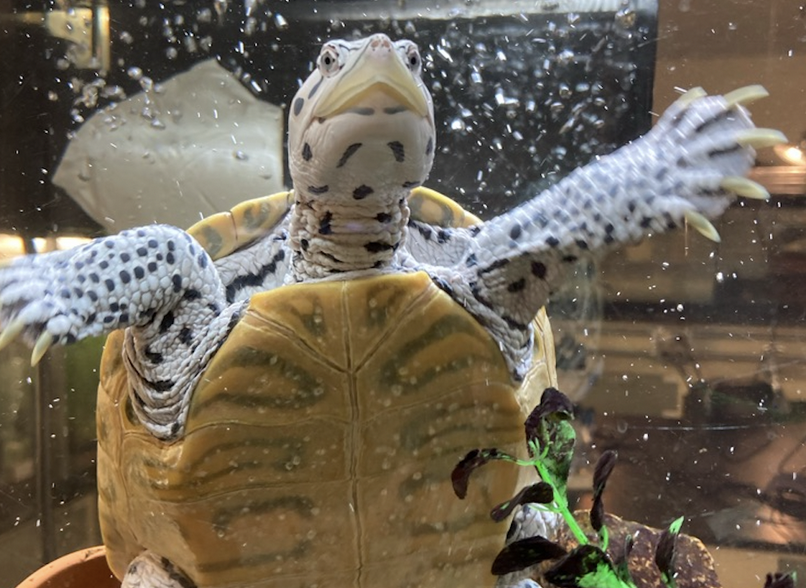
Diamondback Terrapin
Malaclemys terrapin
- Species type: Turtle
- Fun fact: They are the only freshwater turtles known to survive in brackish (part salty and part fresh) water.
- IUCN status: Vulnerable
- Range: United States (primarily east coast)
- Threats: Habitat loss, pollution, climate change
- Diet: Carnivores (fish, snails, clams, mussels, and mollusks)
- Where they are in the lab: there are some studies done with them when they are babies (will link to published ones) before they are released in a ceremony in Delaware
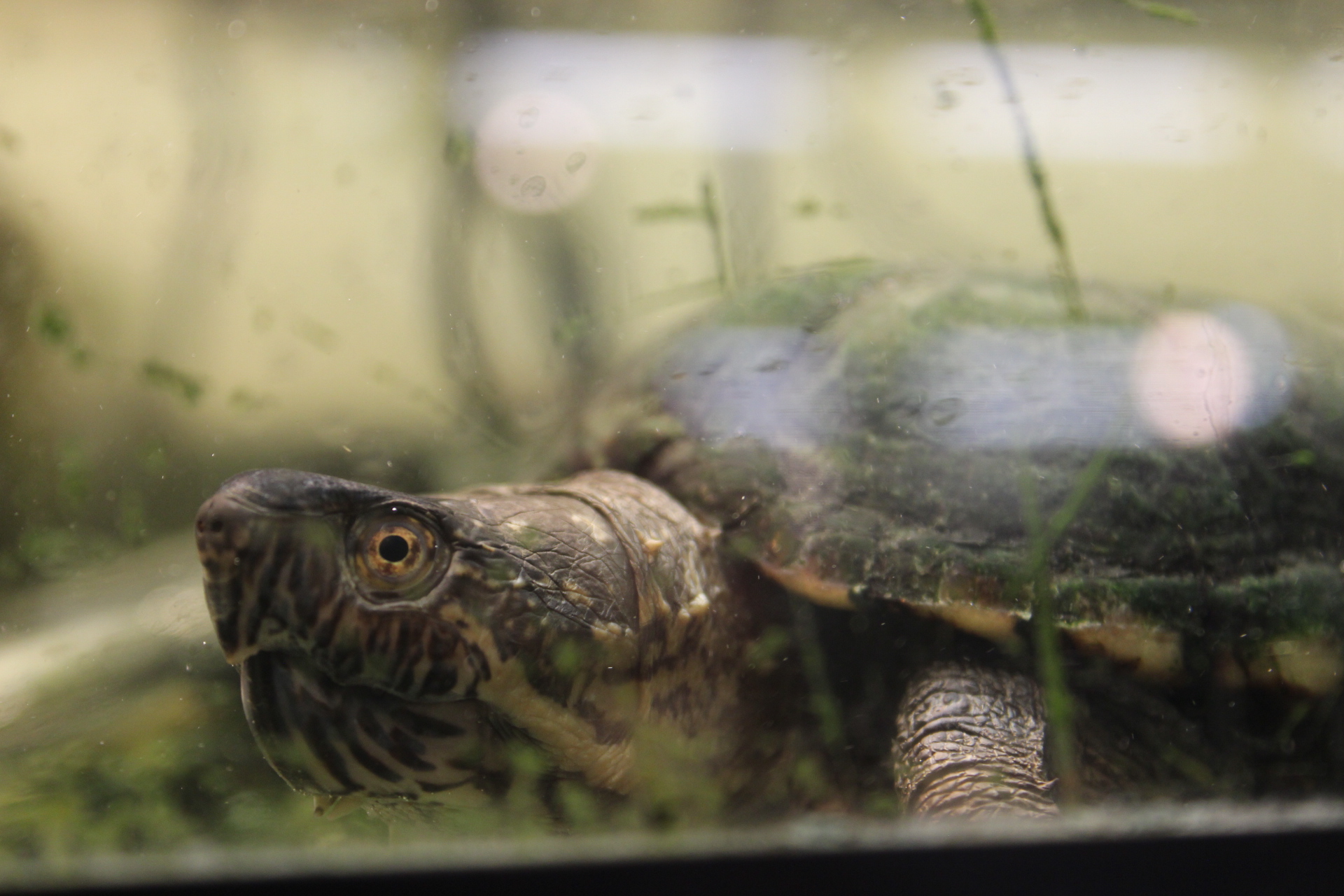
Mud Turtle
Kinosternon subrubrum
- Fun fact: Mud turtles remain small their entire lives and rarely grow larger than 5 inches.
- IUCN status: Least Concern
- Range: East Coast US
- Threats: Habitat loss
- Diet: Omnivorous (algae, small bugs, mollusks)
- Where they are in the lab: Mostly just housed, two of them are parents of all the others in the lab
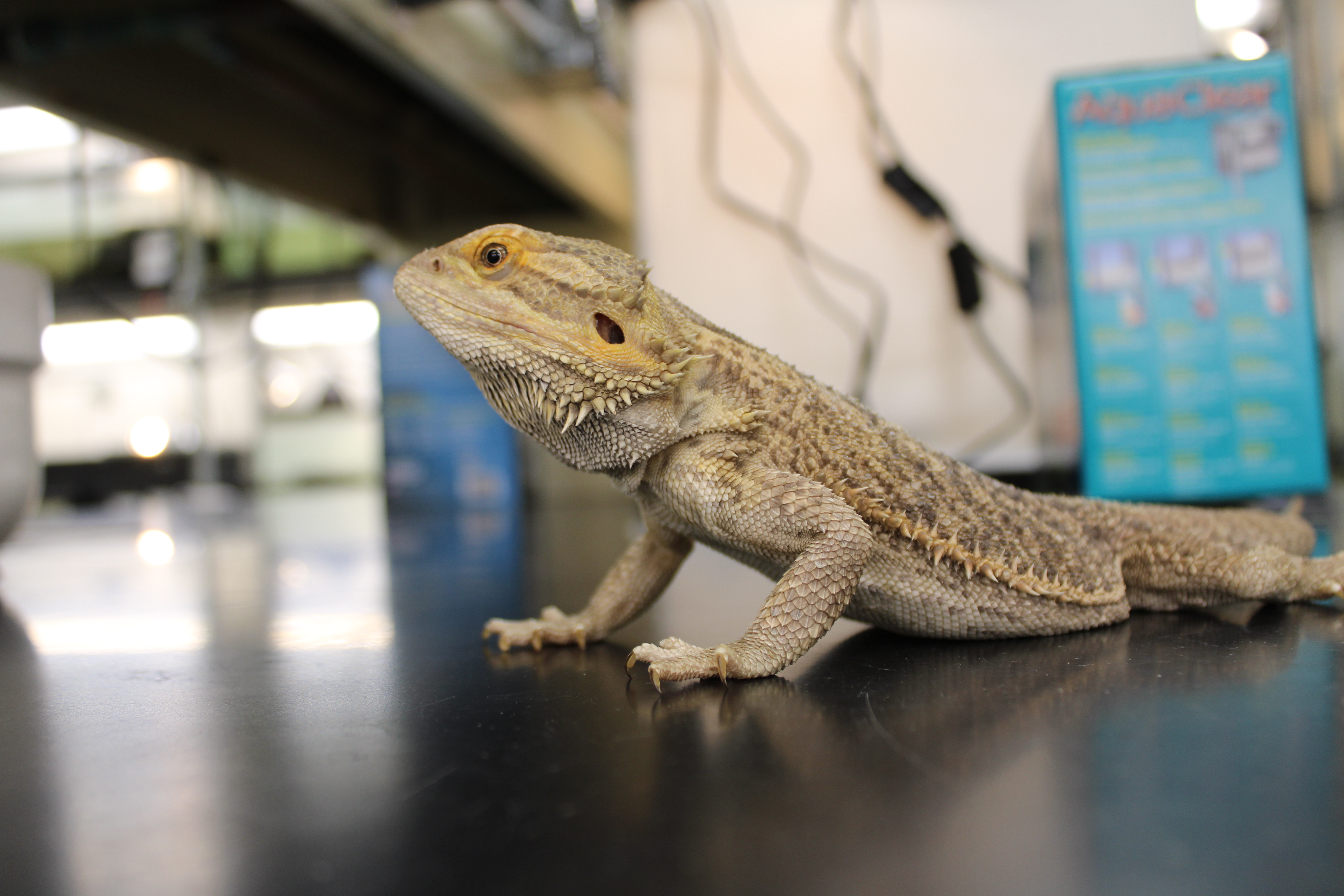
Bearded Dragon
Pogona vitticeps
- Fun fact: They have a third eye on the top of their head that allows them to sense changes in light and temperature.
- IUCN status: Least Concern
- Range: Mostly Australia; deserts
- Threats: Habitat Loss, issues in human care
- Diet: Omnivores (crickets, lettuce, fruit)
- Where they are in the lab: Just Helena, taken care of and she is a spotlight species and helps to educate visitors in the lab.
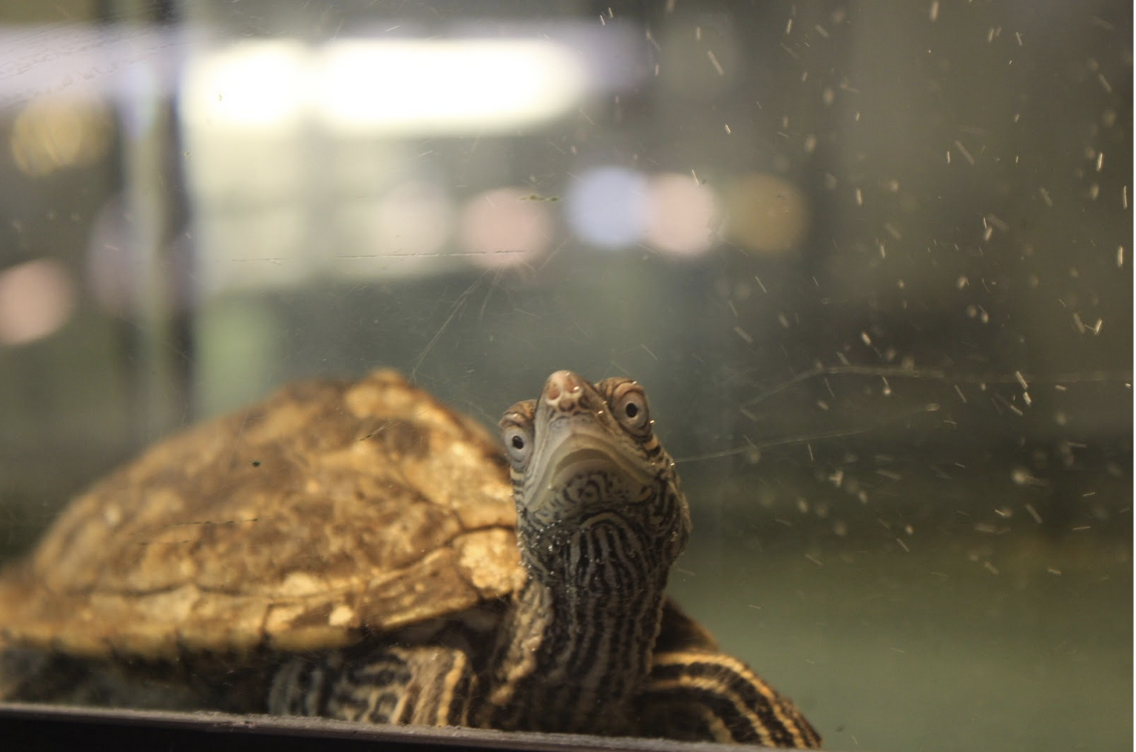
False Map Turtle
Graptemys pseudogeographica
- Fun fact: Fairly extroverted species and get along well with other turtles
- IUCN status: Least Concern
- Range: Typically the Midwest/upper midwest United States, but can be found in a few southwest states as well
- Threats: Destruction of eggs, pet trade, and being trapped in fishnets (bycatch)
- Diet: Omnivores
- >Where they are in the lab:Just housed
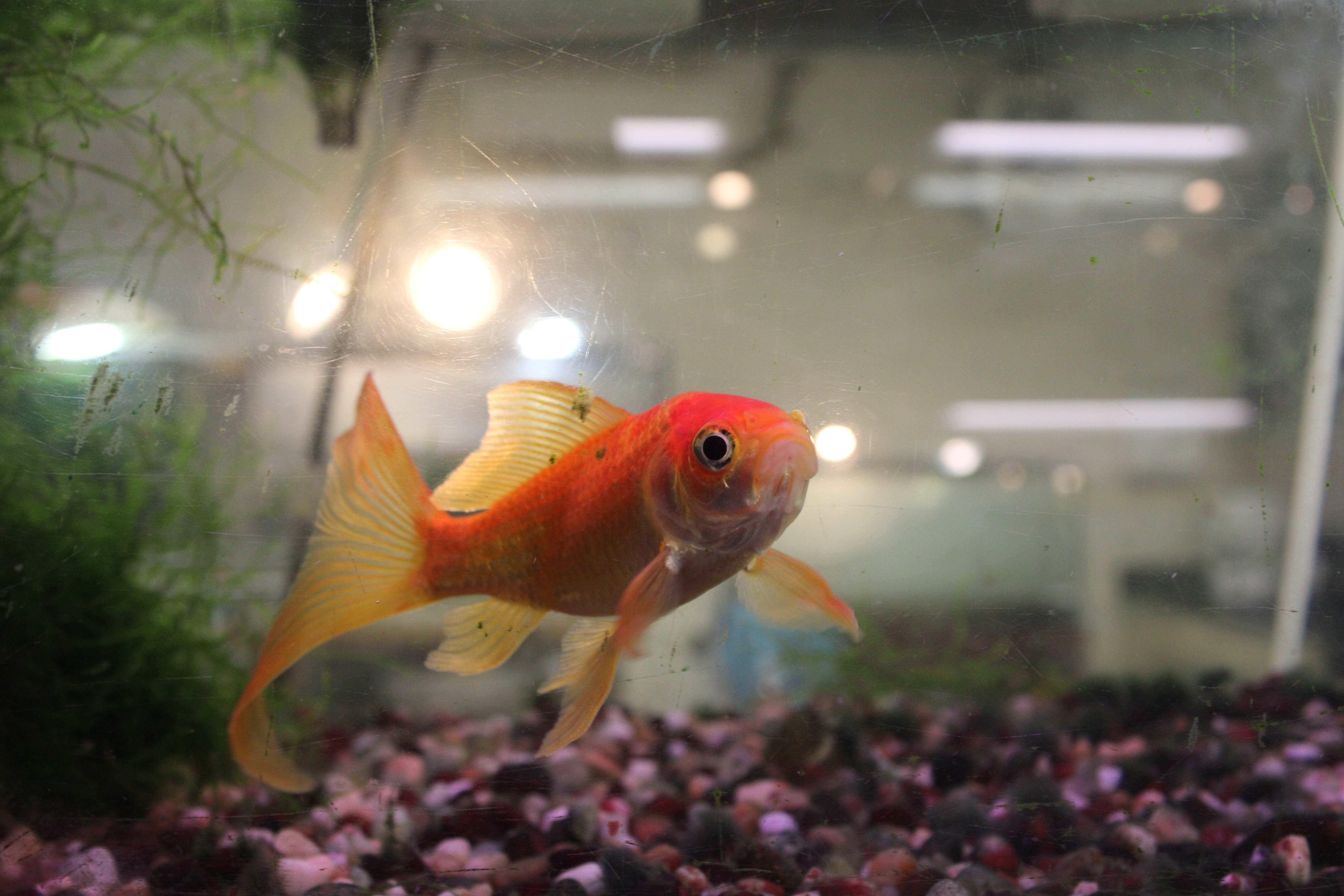
Goldfish
Carassius auratus
- Fun fact: Goldfish actually used to be silver! Then a natural genetic mutation occurred and they were selectively bred for their gold/orangish coloration.
- IUCN status: Least concern
- Range : Native to most of Asia, but have been introduced to other countries worldwide
- Threats: Disease, habitat loss
- Diet: Omnivores
- Where they are in the lab: Housed, sometimes used in shoaling studies
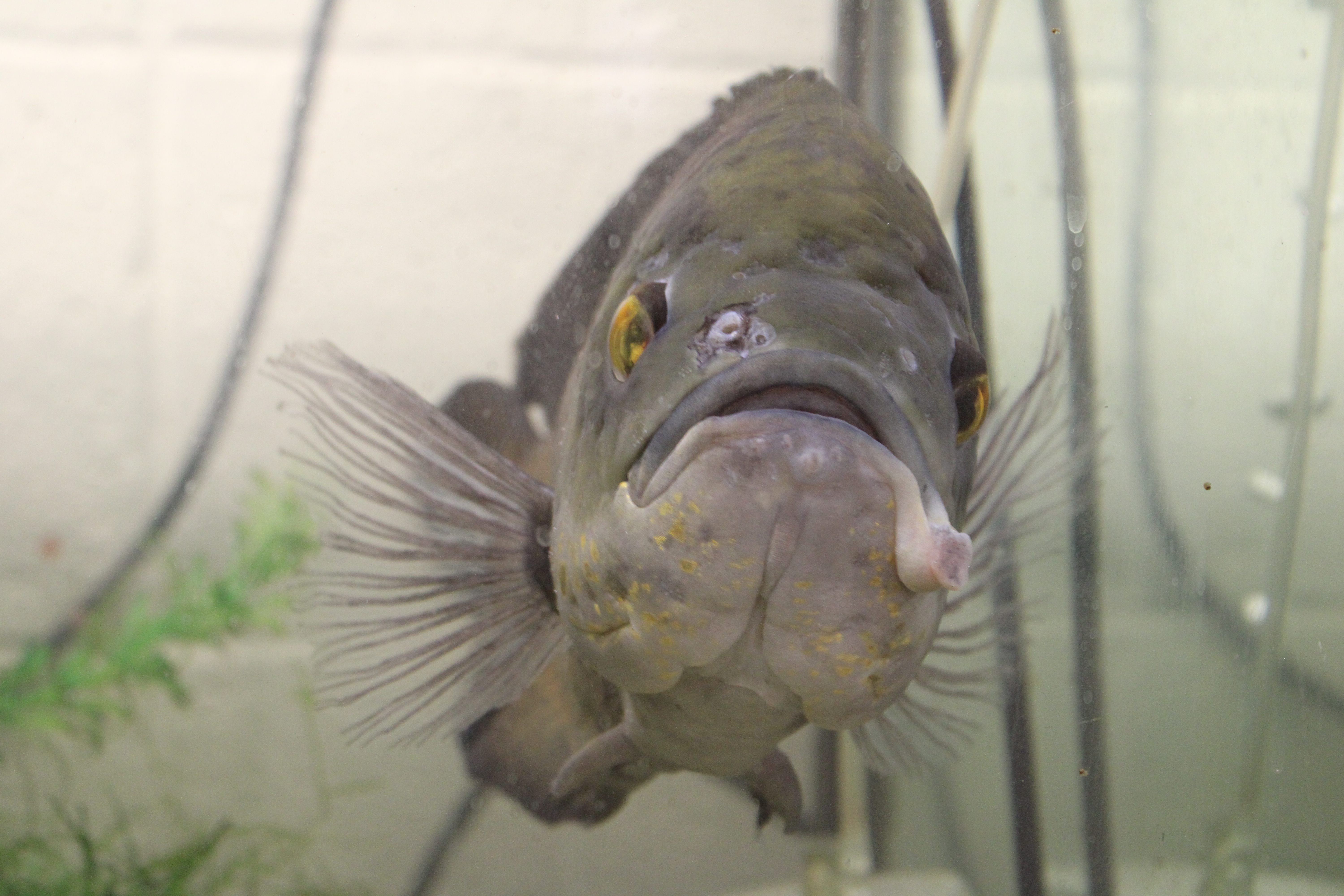
Oscar
Astronotus ocellatus
- Fun fact:This species is able to change their coloration as a form of territorial behavior.
- IUCN status:Least Concern
- Range:South America, but have been introduced to China, Florida, and Australia
- Threats: Pet trade, habitat loss, parasites and disease, pollution, overfishing
- Diet:Omnivores, but they are predator species and enjoy eating meat
- Where they are in the lab:Just the one who is housed
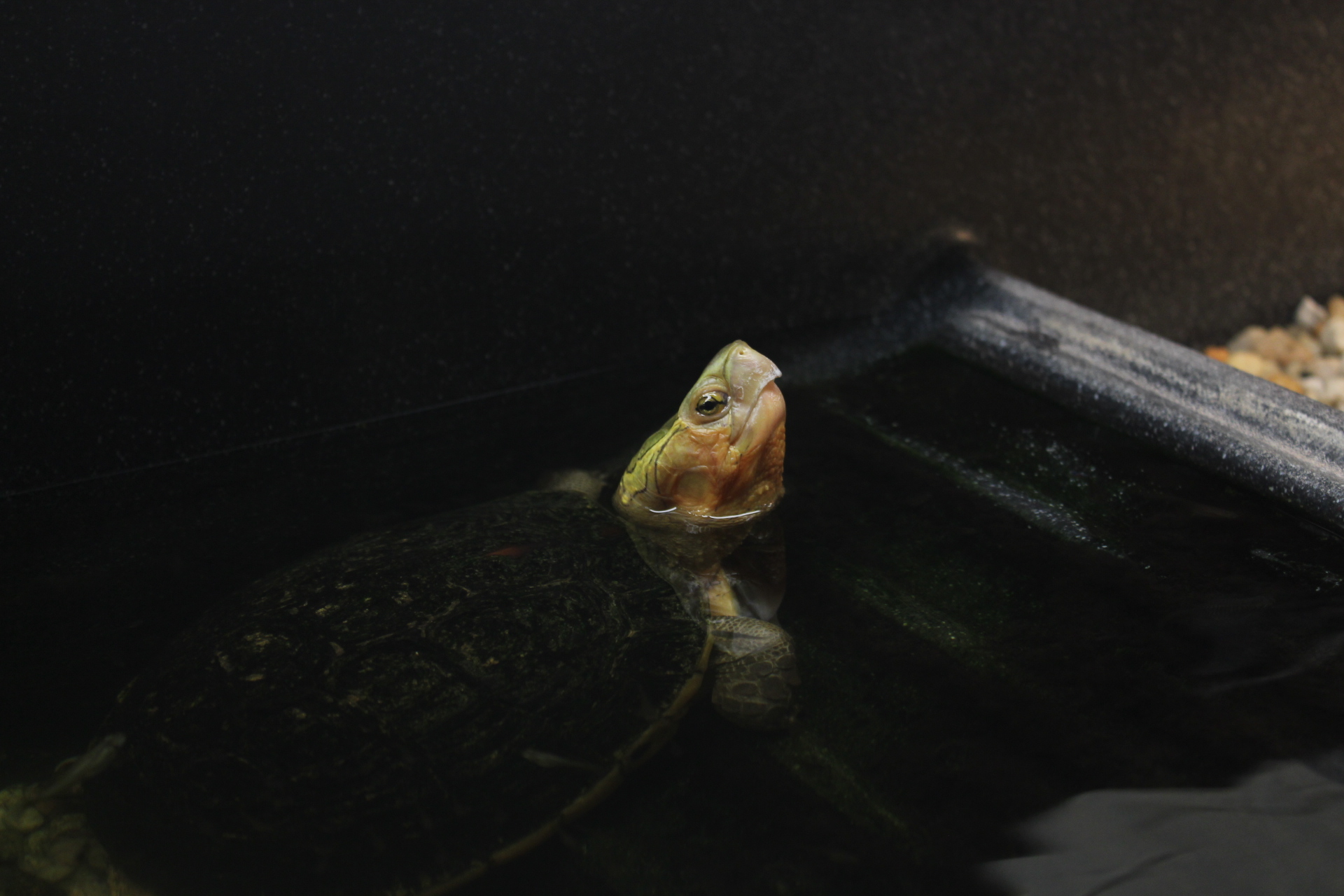
Yellow margined box turtle/chinese box turtle
Cuora flavomarginata
- Fun FactThe simplified version of its Chinese name is the “snake eating turtle”.
- IUCN status:Endangered
- Range:Primarily Asia; specifically Japan, China, and Taiwan
- Threats:Habitat loss
- Diet:Omnivorous (slugs, fruit)
- Where they are in the lab:Just Personality (pictured above)
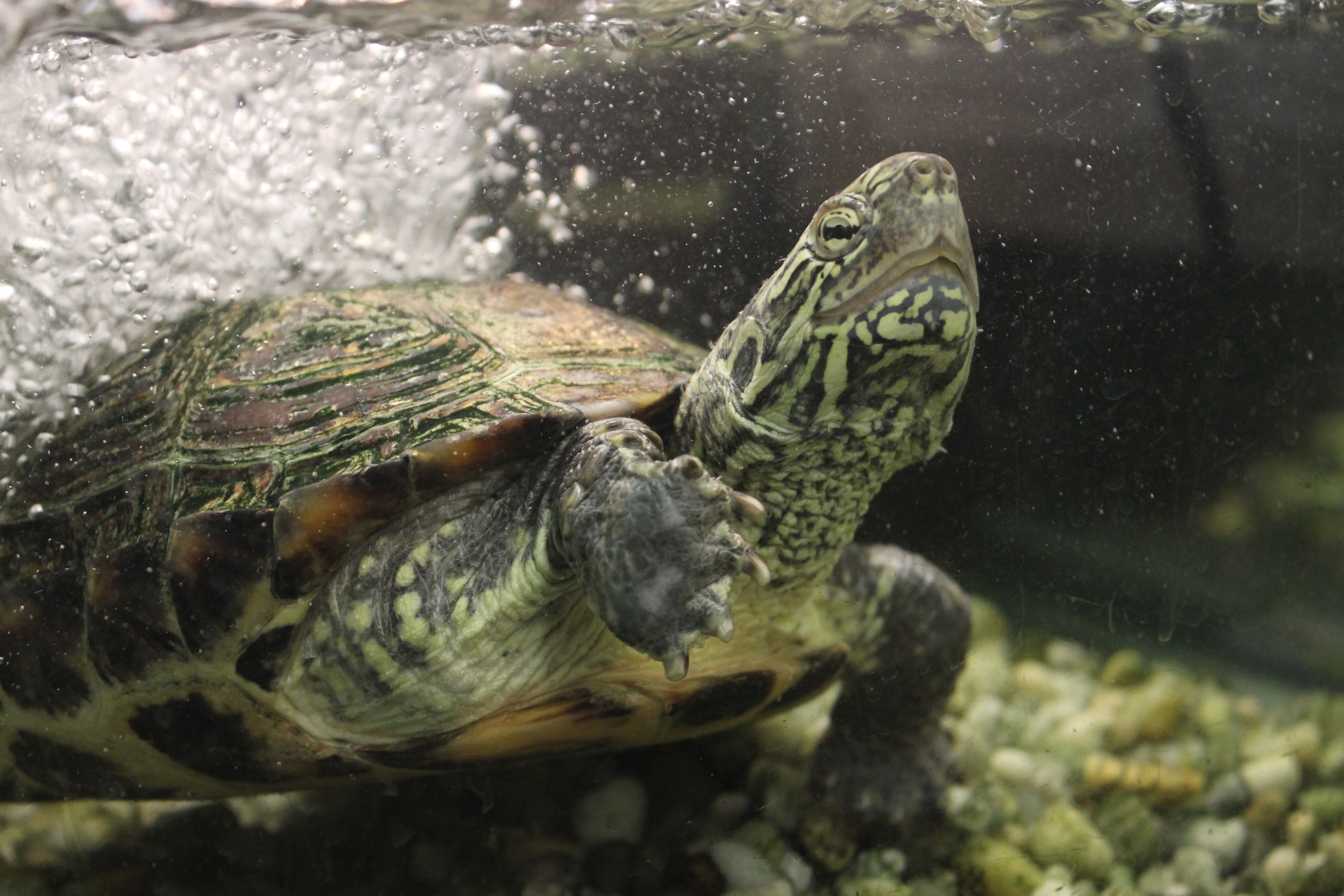
Reeves Turtle
Mauremys reevesii
- Fun Fact:They were often farmed in China due to the high demand for their shells for divination rights.
- IUCN status:Endangered
- Range:Primarily Southeast/East Asia
- Threats:Pet trade, habitat loss, overhunting
- Diet:Omnivores
- Where they are in the lab:We are technically an assurance colony for them, since they are endangered. What this means is that we have sanction from a environmental agency to care for them.
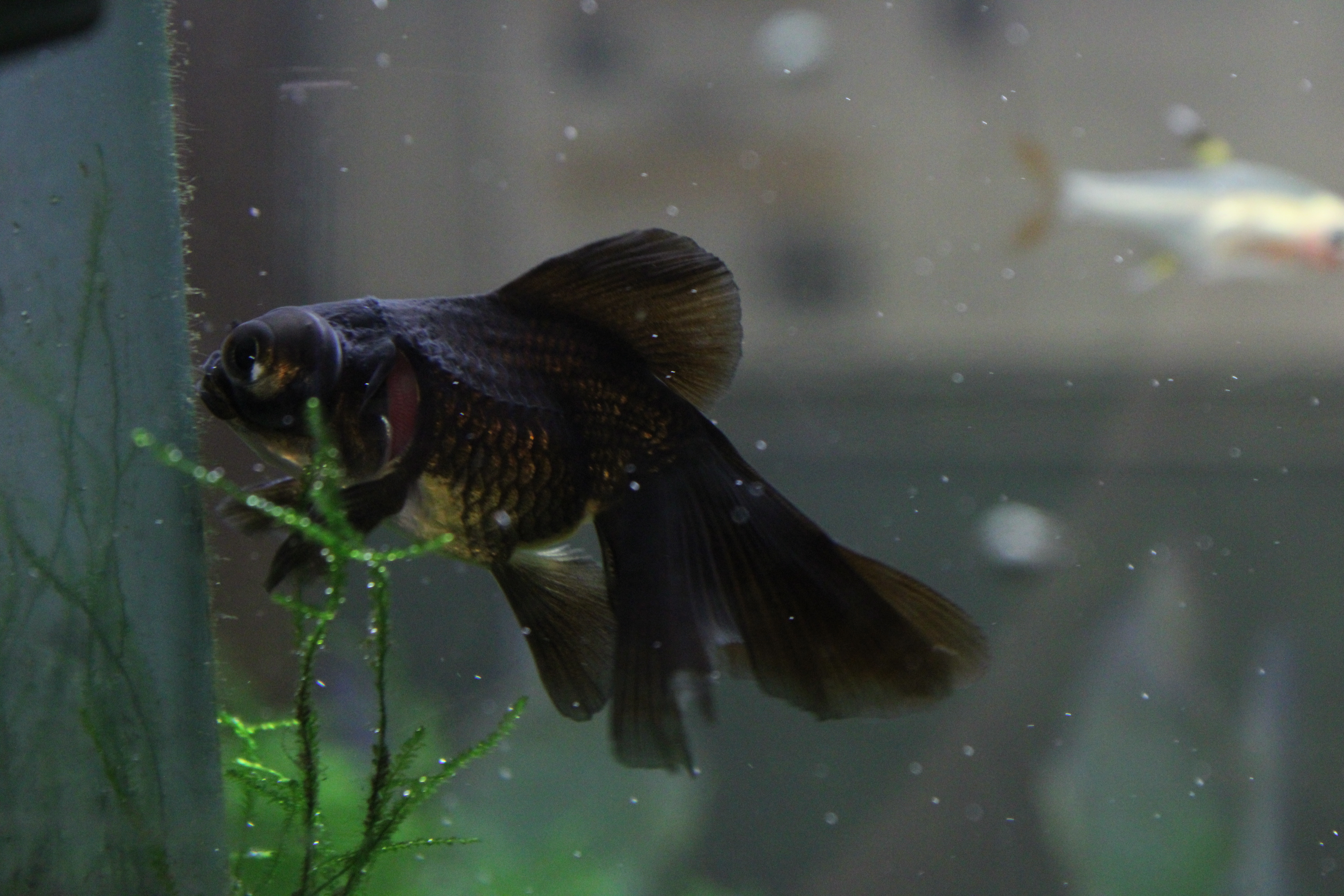
Black Moor Goldfish
Carassius auratus
- Fun Fact:Due to their peaceful nature, they are often found in tanks with many different kinds of fish.
- IUCN status:Least Concern
- Range:Primarily China
- Threats:Disease, habitat loss, pet trade
- Diet:Omnivores
- Where they are in the lab:Housed with other fish
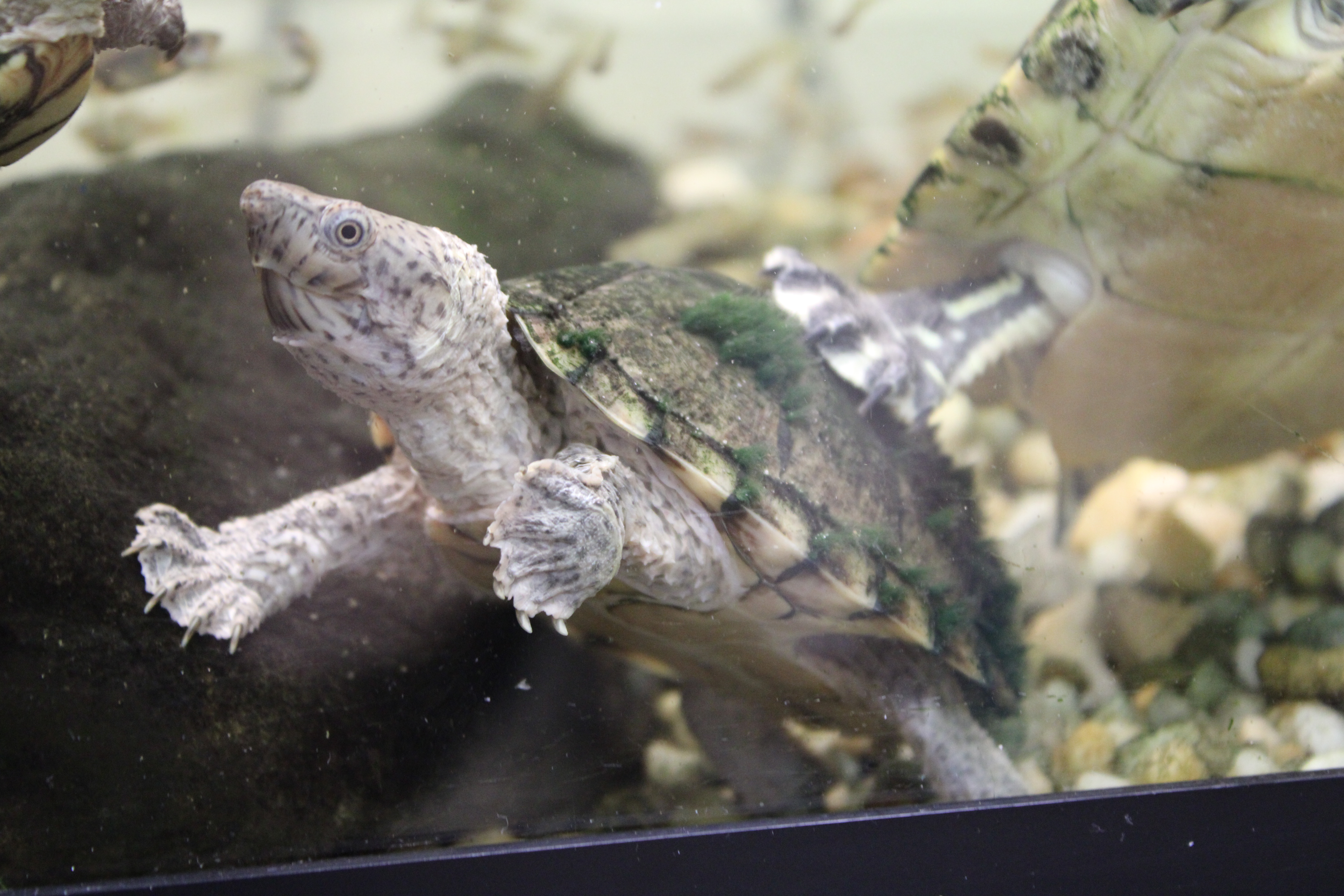
Razorback Musk Turtle
Sternotherus carinatus
- Fun Fact:When frightened, these turtles will release a bad sent to drive the predator away- this is how they got their name!
- IUCN status:Least Concern
- Range:Southeast United States
- Threats:Primarily habitat loss
- Diet:Omnivores
- Where they are in the lab:Just two that are cared for by the students.
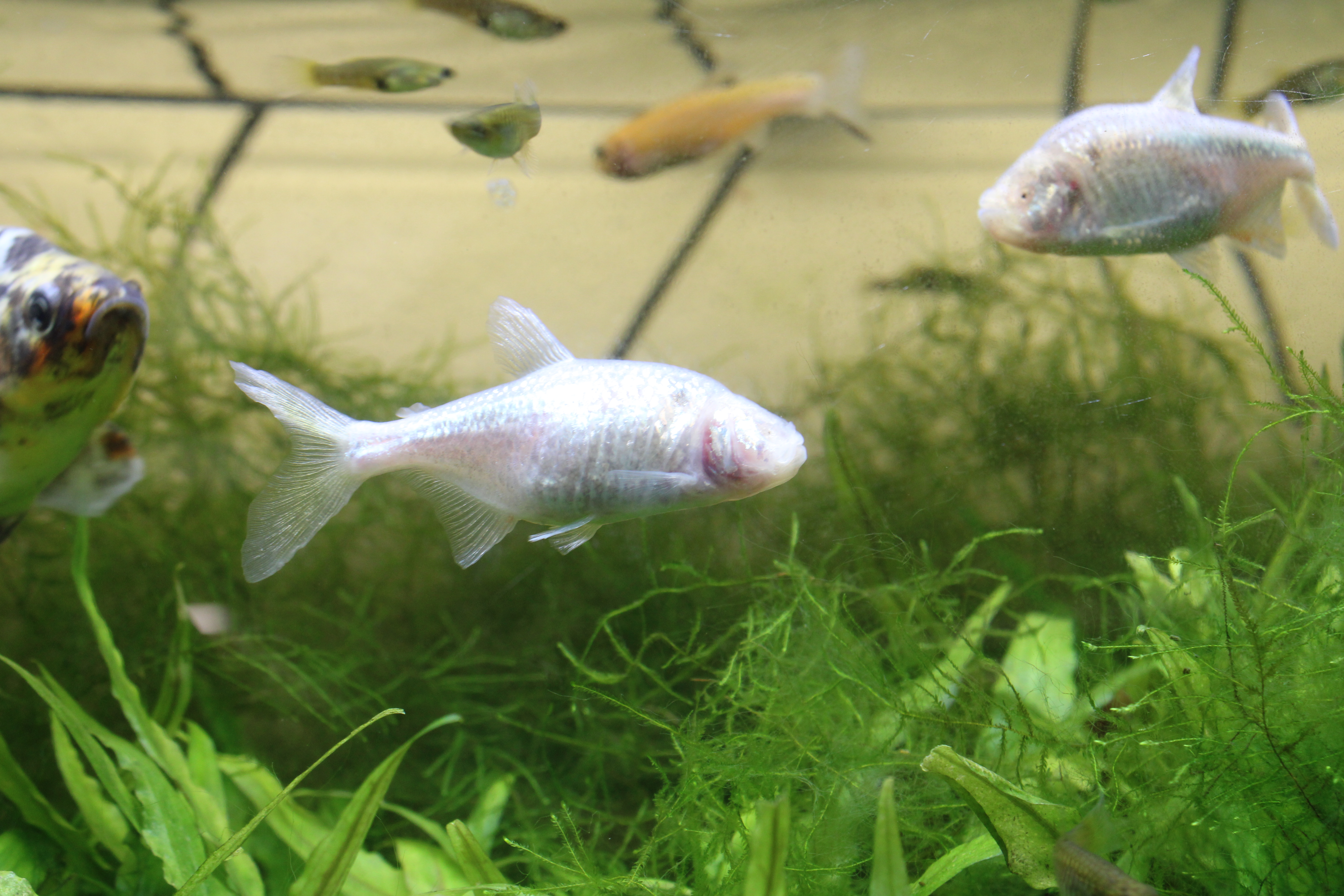
Blind cave fish/Mexican tetra
Astyanax mexicanus
- Fun Fact:Since these fish can’t see, they rely on other senses to get around and find food.
- IUCN Status:Least Concern but was listed as vunerable until 2011.
- Range:Mexico and the United States
- Threats:Habitat loss and overfishing
- Diet:Omnivores but perfer bugs
- Where they are in the lab:Taken care of by the students
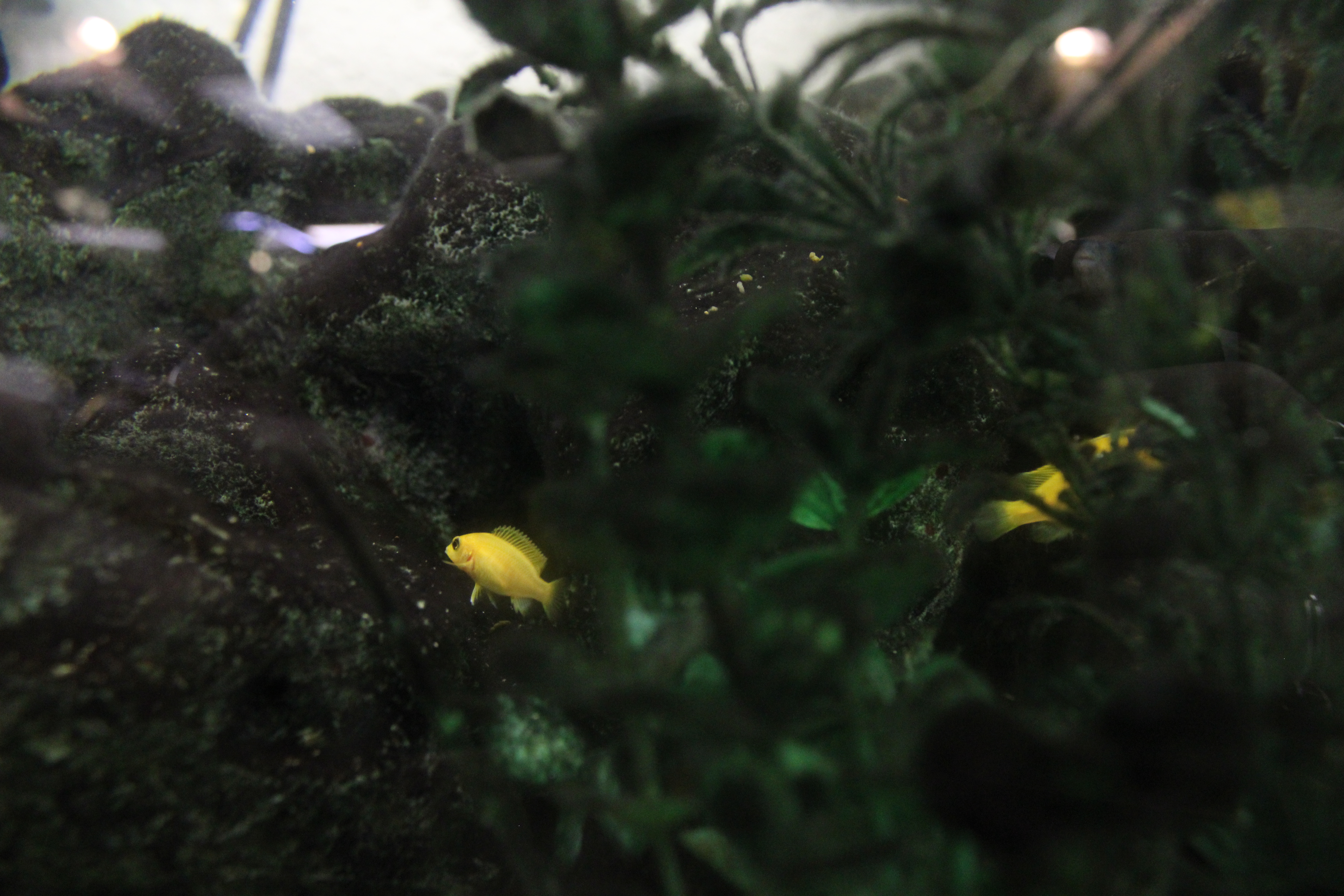
Electric Yellow African Cichlids
Labidochromis caeruleus
- Fun Fact:This species exhibits sexual dimorphism! That’s when the males and females can be distinguished from one another based on traits they exhibit. In this case, males have subtle gray markings, while females don’t.
- IUCN status:Least Concern
- Range:East Africa (Lake Malawi) and other parts of Burundi
- Threats:Habitat loss, pet trade, and pollution
- Diet:Omnivores
- Where they are in the lab:Taken care of by students
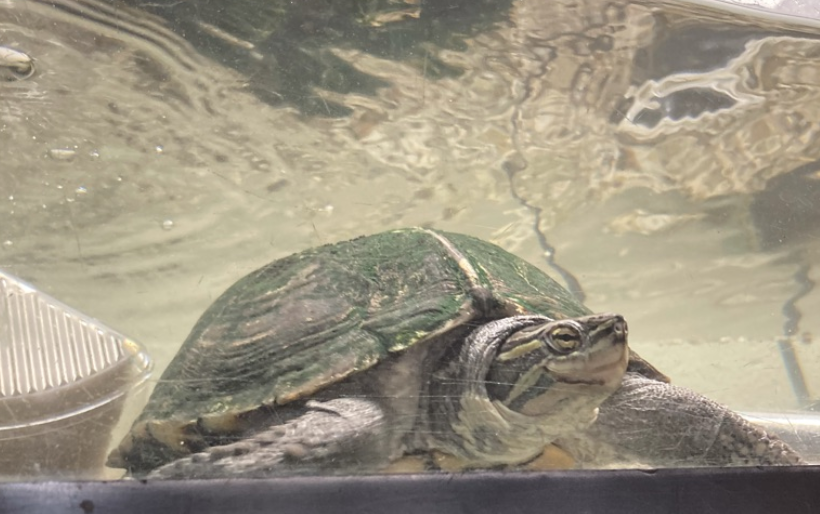
Vietnamese Pond Turtle/Annam Leaf Turtle
Mauremys annamensis
- Fun Fact: These turtles are sometimes called “living fossils” because they have been along for so long.
- IUCN Status: Critically Endangered
- Range: Asia, mostly Vietnam
- Threats: Illegal poaching for pet trade, habitat destruction, and pollution
- Diet: Omnivorous
- Where they are in the lab: We are an assurance colony for this species since they are critically endangered. Often the Turtle Survival Alliance gives us any injured or non injured turtles of this species for us to take care of.
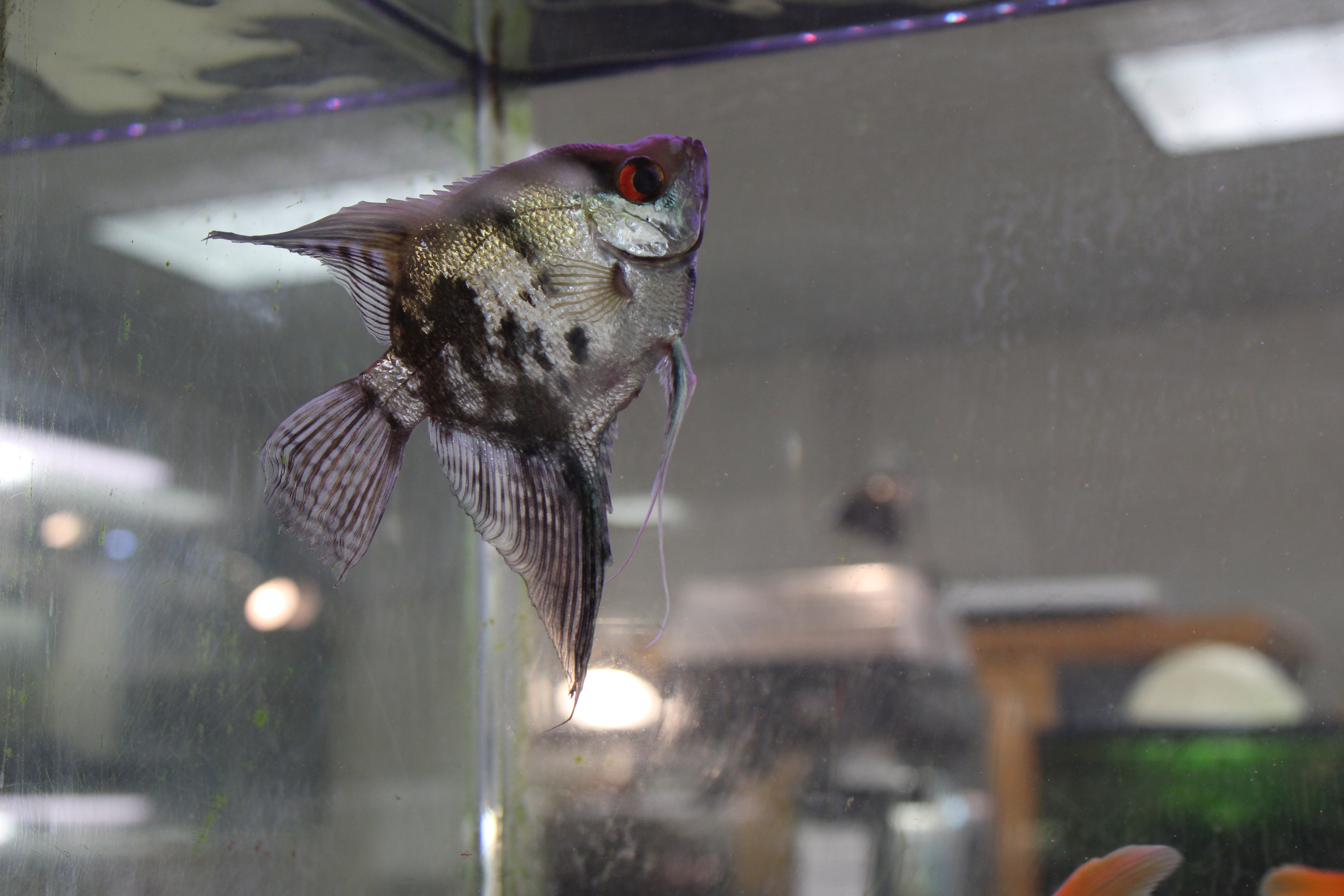
Silver Angelfish
Pterophyllum Scalare
- Fun Fact: These fish tend to have a social hierarchy that they follow.
- IUCN Status: Least Concern
- Range: Across the Amazon Basin in South America
- Threats: Habitat loss, climate change, pet trade
- Diet: Omnivorous
- Where they are in the lab: In a few tanks with several other species that are taken care of by students.
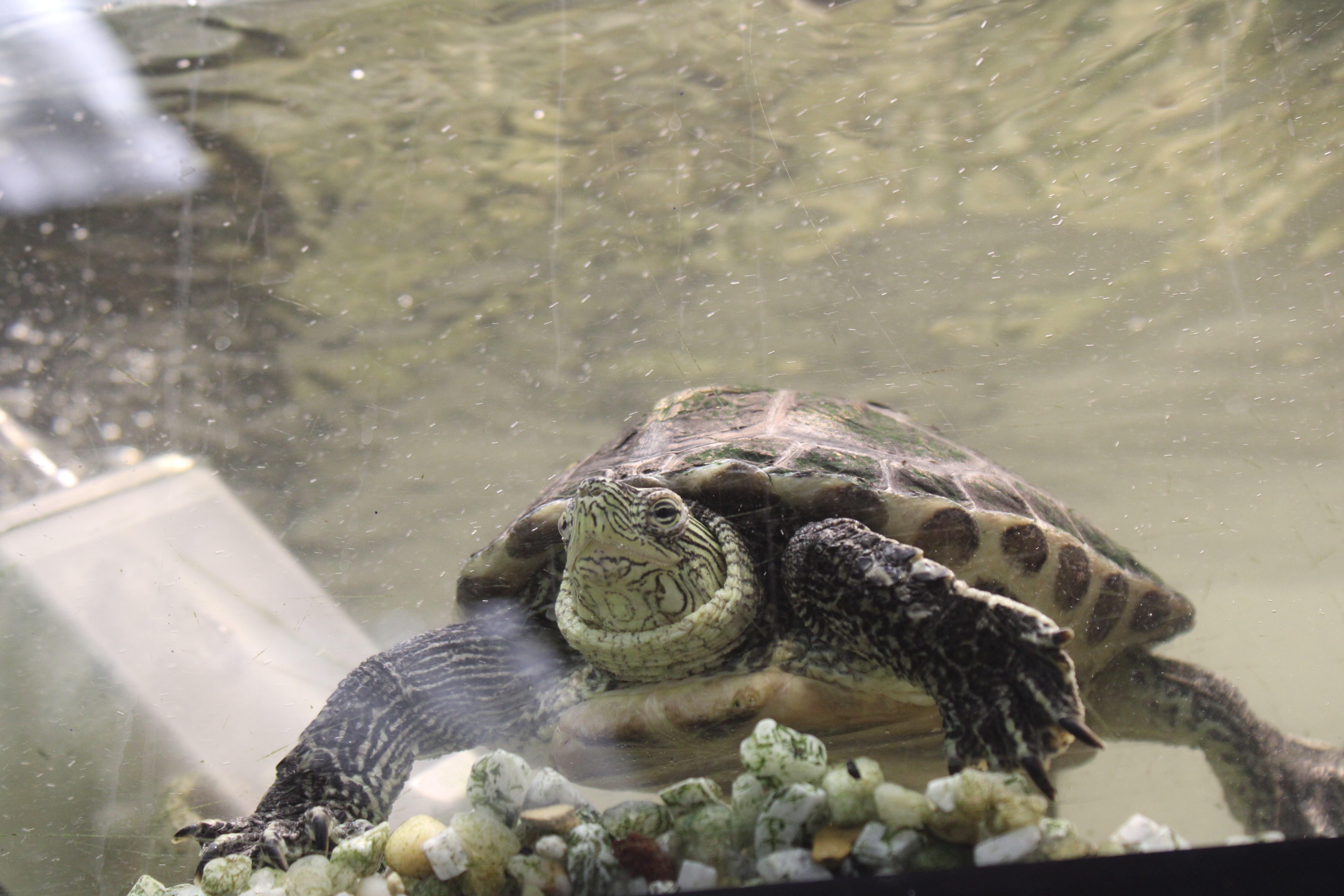
Chinese Golden Thread Turtle
Mauremys sinensis
- Fun Fact: Was commonly used for divination during the Shang Dynasty.
- IUCN Status: Critically Endangered
- Range: China, Northern/Central Vietnam
- Threats: Urbanization, habitat loss, pollution, pet trade, and invasive species
- Diet: Omnivorous, prefer insects or meat
- Where they are in the lab: Just one who is taken care of by a student and constantly monitored as a critically endangered species.
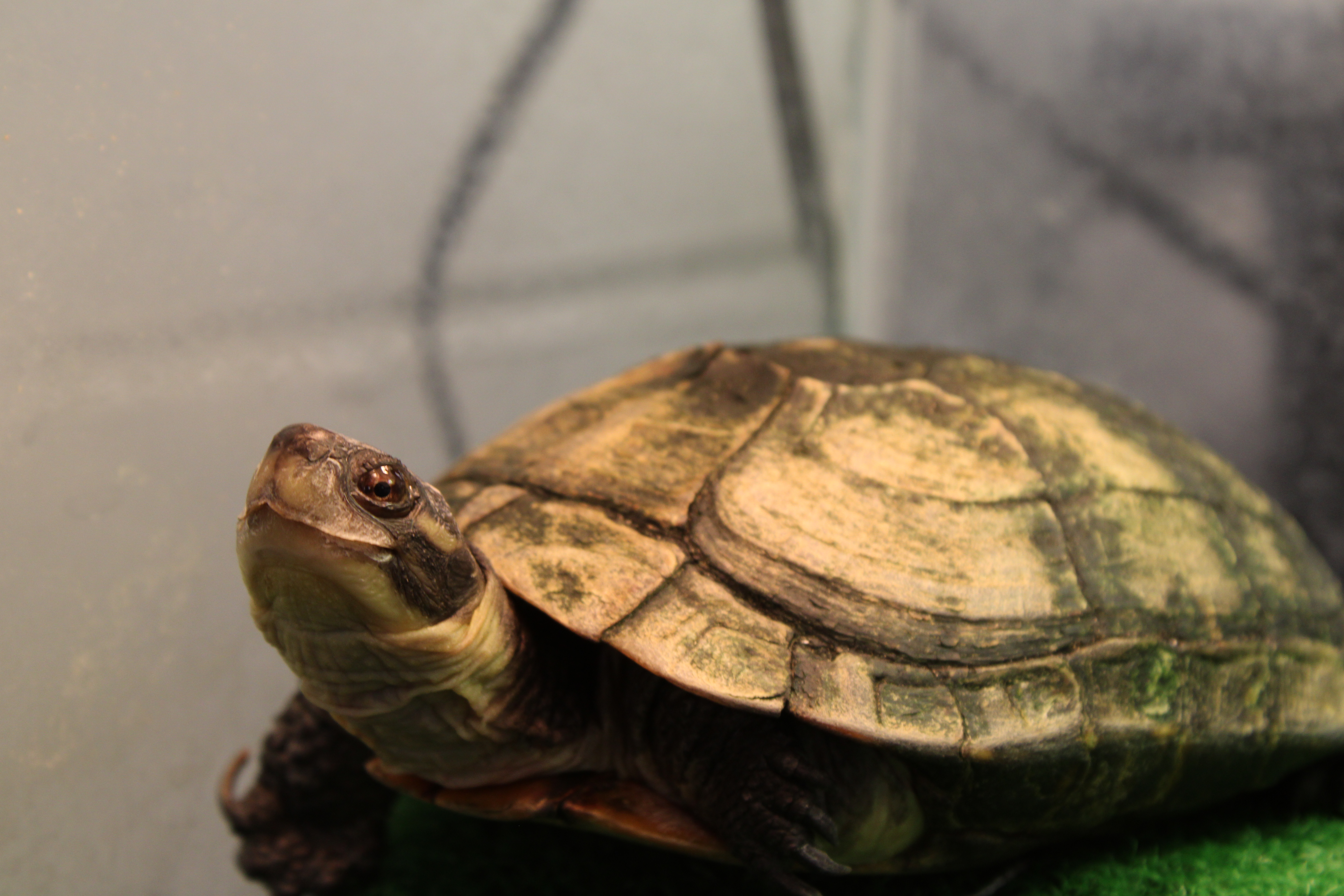
Yellow Pond Turtle
Mauremys mutica
- Fun Fact: They’re actually related to the Reeves turtles!
- IUCN Status: Critically Endangered
- Range: East Asia, native to southern Ryukyus
- Threats: Human consumption, water pollution, pet trade, and habitat loss
- Diet: Omnivorous
- Where they are in the lab: Just one who is taken care of by students
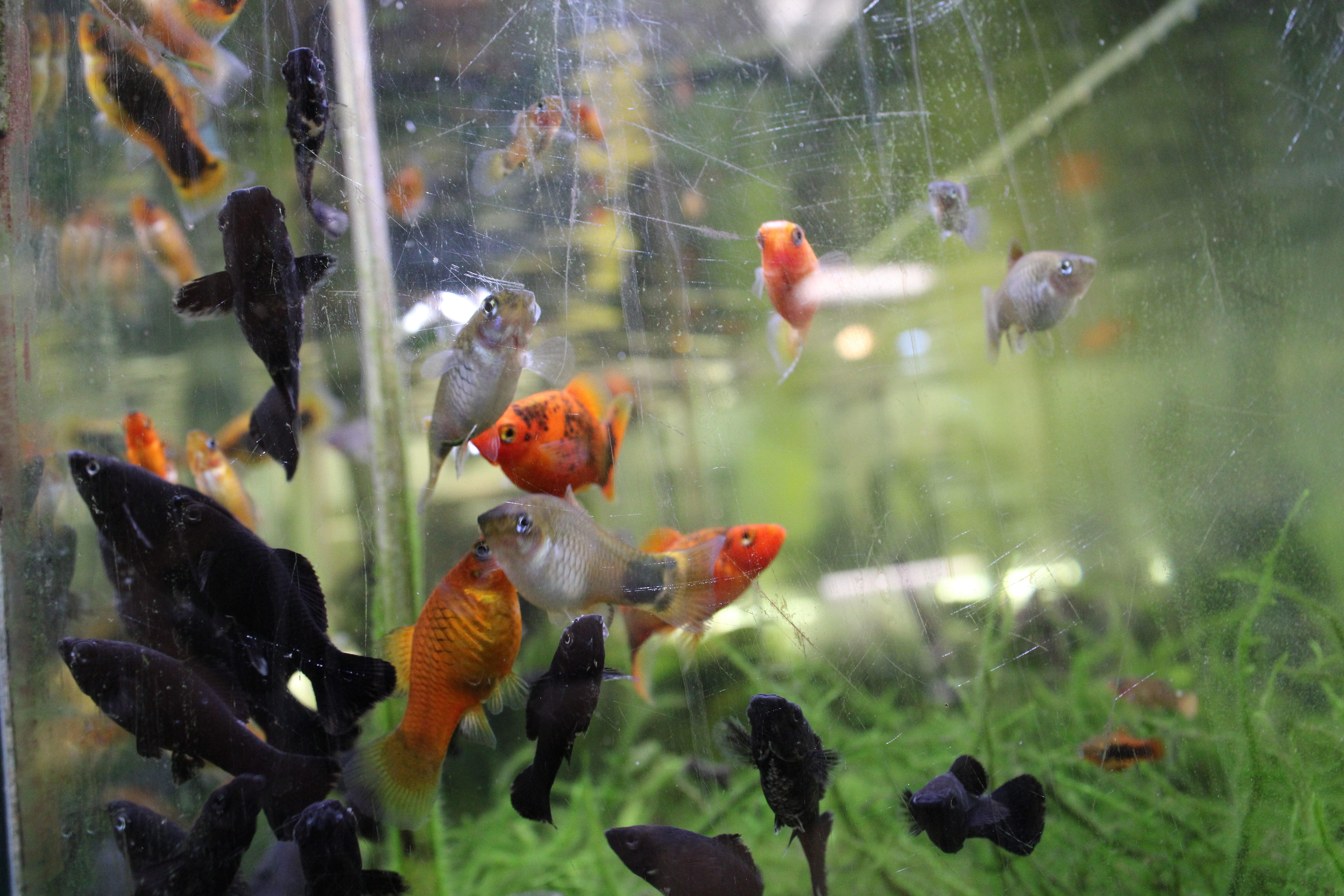
Platy fish (southern platies and variable platies)
Xiphophorus maculatus/Xiphophorus variatus
- Fun Fact: There are many different kinds of platies, which is why they are used in a lot of research.
- IUCN Status: Least Concern
- Range: Native to Mexico but have been introduced to parts of South America and the US
- Threats: Pet trade, habitat degradation
- Diet: Omnivores
- Where they are in the lab: Housed and used in shoaling studies

Yellow Spotted Amazon River Turtle
Podocnemis unifilis
- Fun Fact: This species is one of the largest South American river turtles.
- IUCN Status: Vulnerable
- Range: South America’s Amazon and Orinoco river basins
- Threats: Pet trade, habitat loss, and pollution
- Diet: Omnivores- Manny really enjoys lettuce!
- Where they are in the lab: Just Manny, who is taken care of by a lab coordinator.
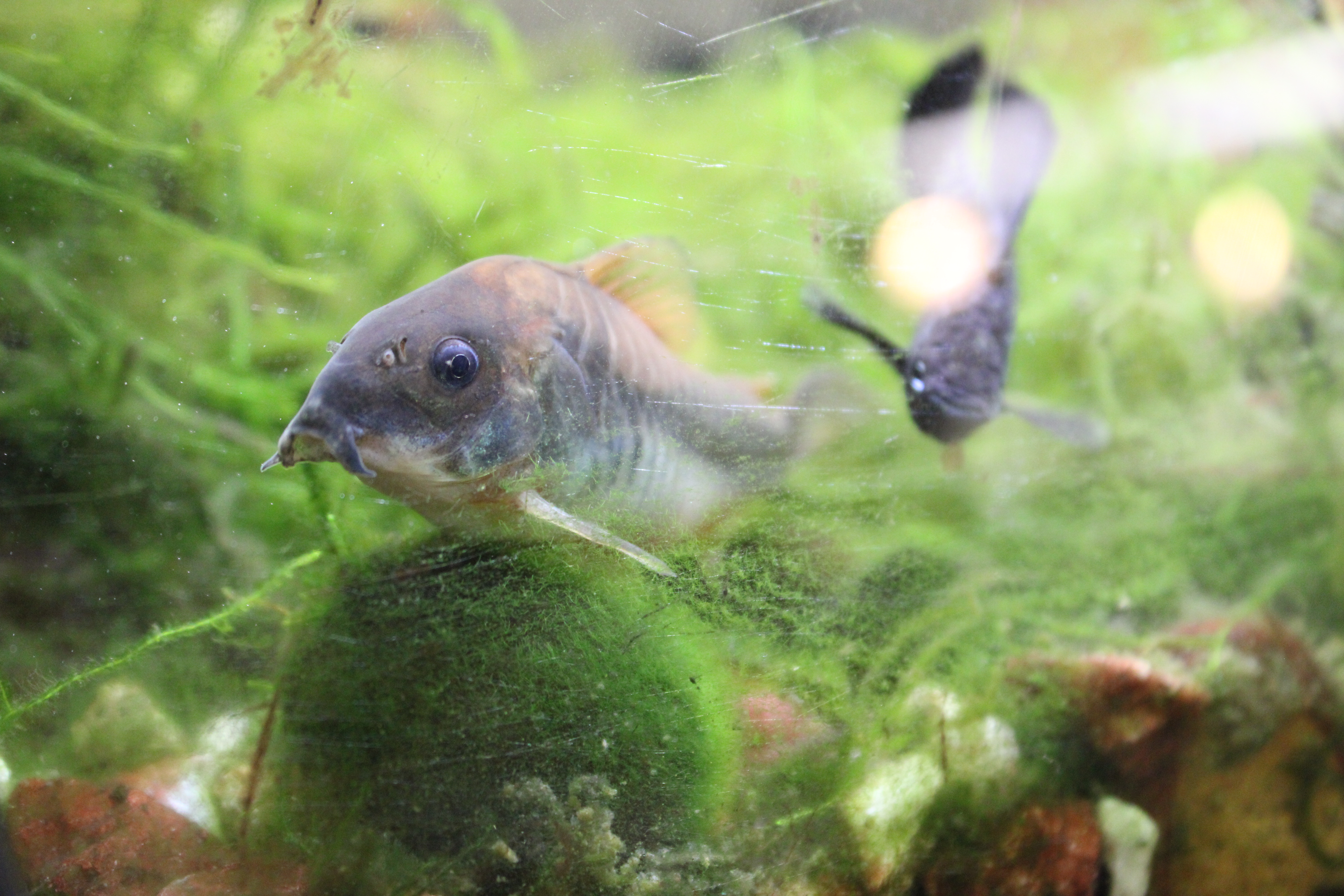
Bronze Corydoras Catfish
Corydoras aeneus
- Fun Fact: They have a small barb on their fins that can poison other fish that attack them.
- IUCN Status: Least Concern
- Range: Typically South America, but has ventured to other areas due to the pet trade
- Threats: Pet trade, habitat loss, water pollution
- Diet: Omnivorous and tend to be bottom feeders when kept in tanks
- Where they are in the lab: Just a few that are in the tank with the Platys.
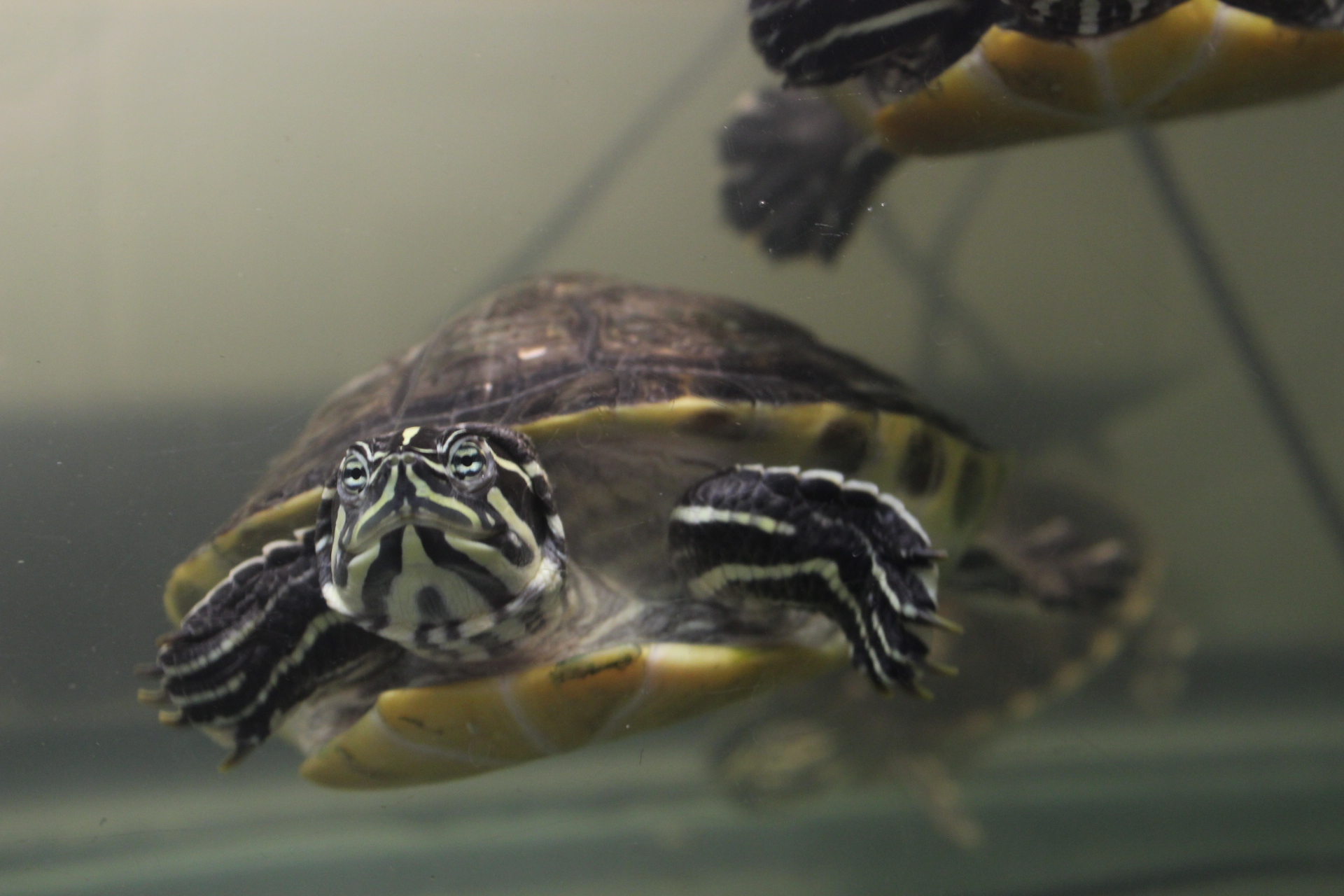
Florida Cooters
Pseudemys floridana floridana or Pseudemys floridana peninsularis
- Fun Fact: They're a good indicator species to see if a pond/ecosystem is healthy.
- IUCN Status: Least Concern
- Range: Florida
- Threats: Habitat loss, vehicle accidents, predation from racoons/foxes/otters
- Diet: Primarily herbivores
- Where they are in the lab: Mostly just taken care of by students, primarily found in 215 but also housed in the Barnes greenhouse.
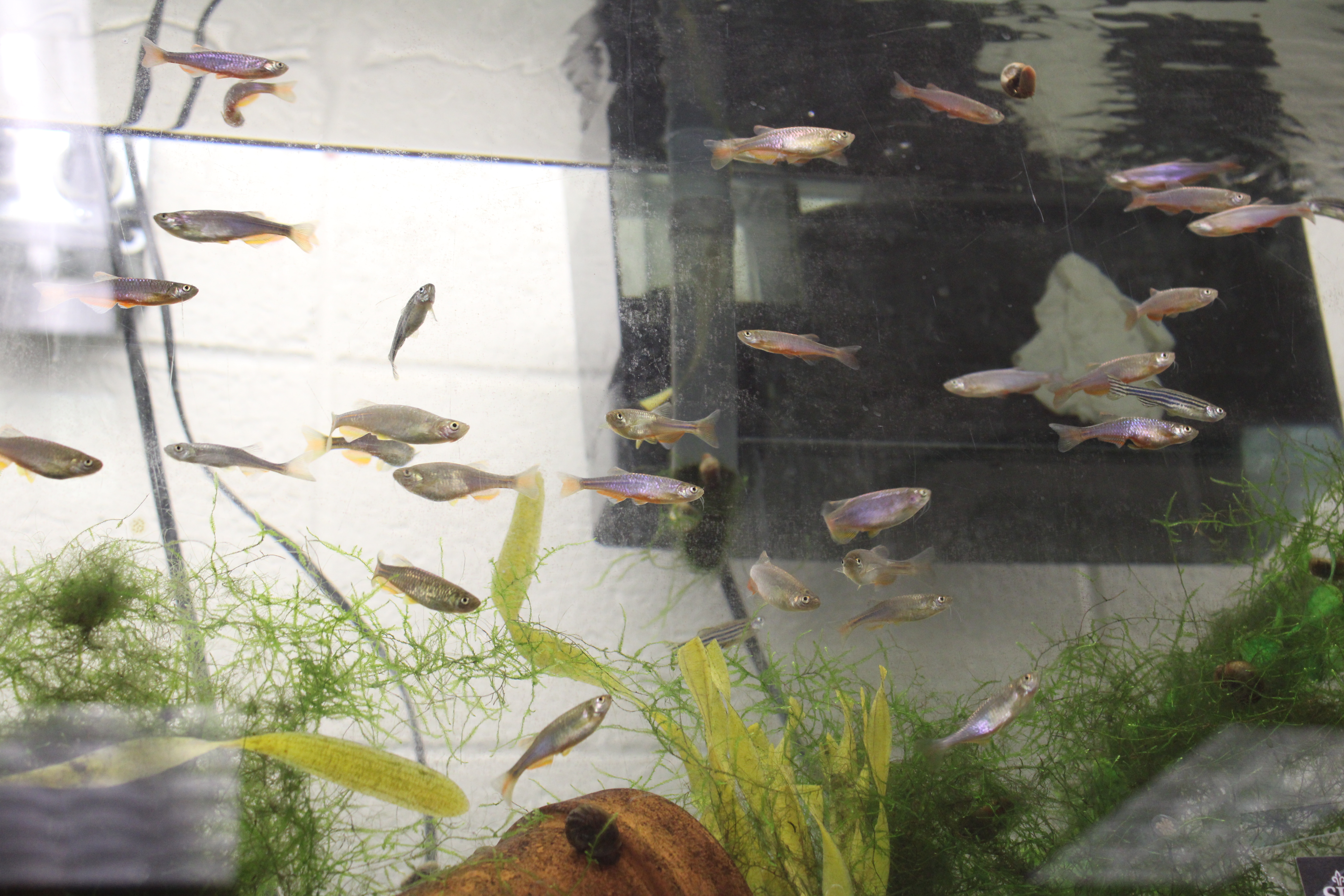
Pearl Danios
Danio albolineatus
- Fun Fact: These fish practice schooling instead of shoaling- this means they will all move in the same direction in a coordinated manner. Shoaling fish tend to move together, but are more independent in their movement. Think of them like the fish that talk to Nemo’s dad!
- IUCN Status: Least Concern
- Range: Southeast Asia
- Threats: Diseases, pet trade, and habitat loss
- Diet: Omnivorous
- Where they are in the lab:In a tank that is taken care of by students.
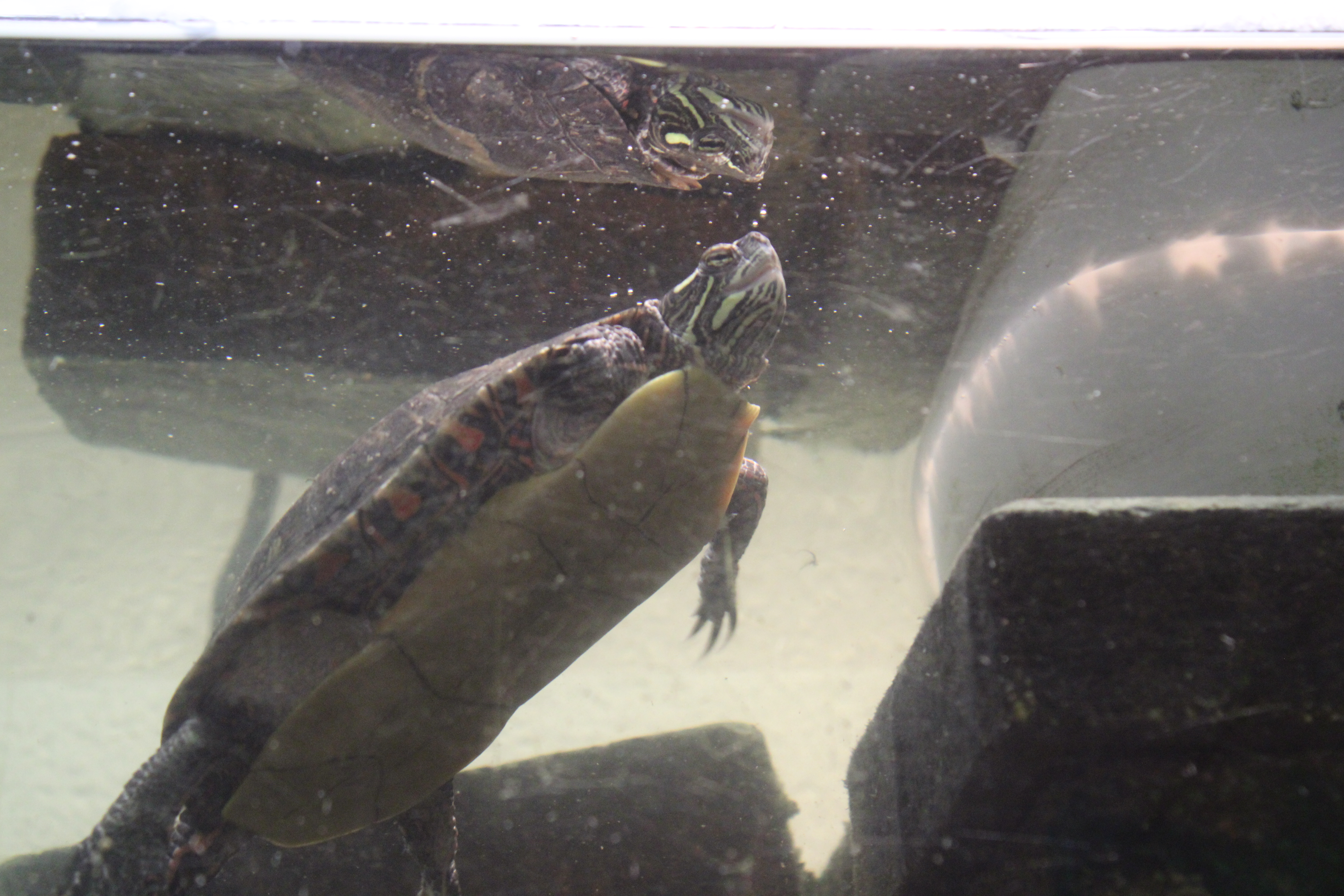
Eastern Painted Turtle
Chrysemys picta picta
- Fun Fact:These turtles have a unique coloration and “painted appearance,” which gives them their name!
- IUCN Status: Least concern
- Range: Eastern United States, primarily
- Threats: Pet trade, habitat loss, and water pollution
- Diet: Omnivores
- Where they are in the lab:Just a few, but the most popular one is Hank, who is taken care of by students.
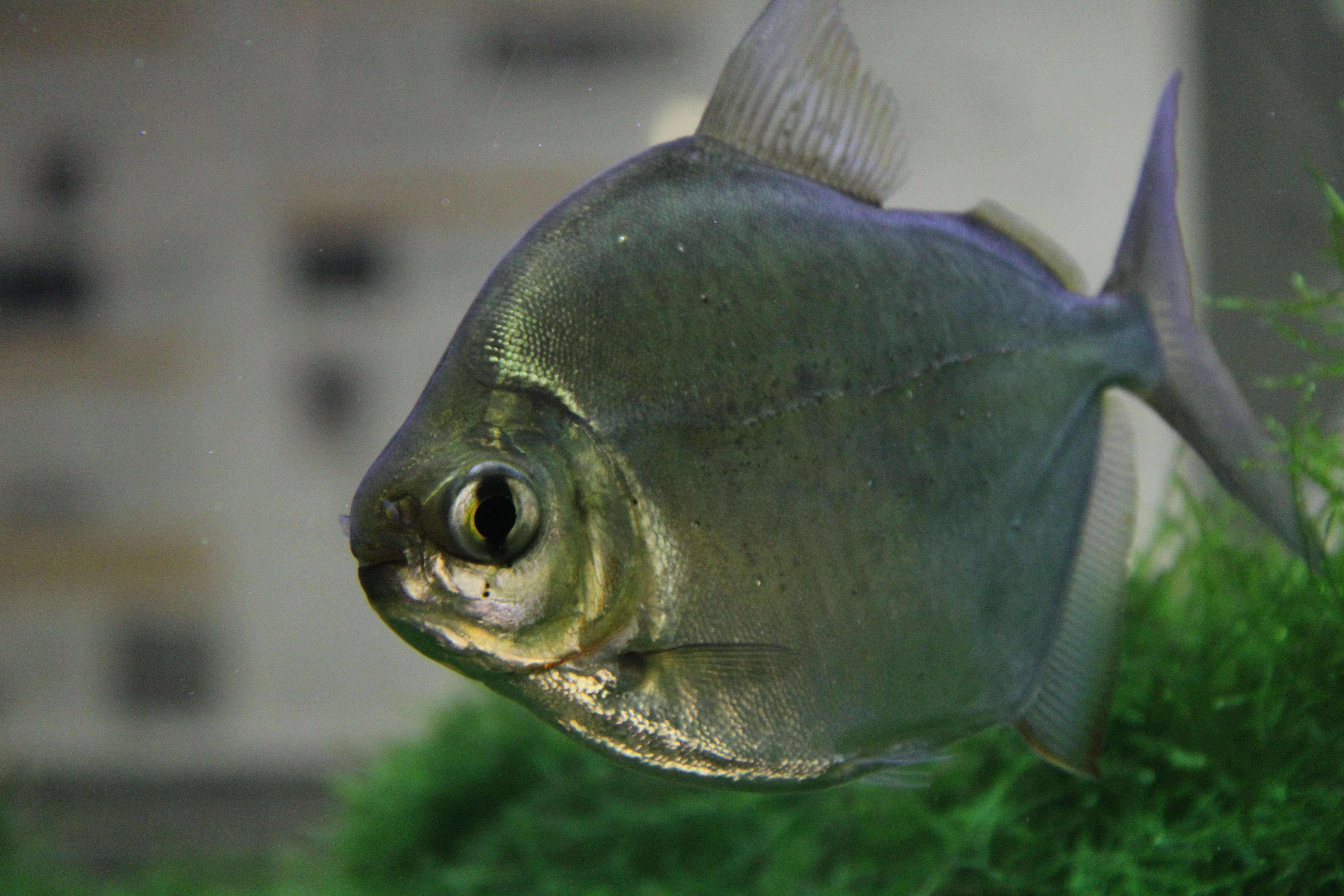
Silver Dollar Fish
Metynnis argenteus
- Fun Fact: Even though they are related to piranhas, they are quite a docile species.
- IUCN Status: Least Concern
- Range: Typically found in South America, specifically Brazil
- Threats: Habitat Loss, pollution, and pet trade
- Diet: Primarily herbivorous, but will eat meat
- Where they are in the lab:In a few tanks with other fish species being taken care of by students.
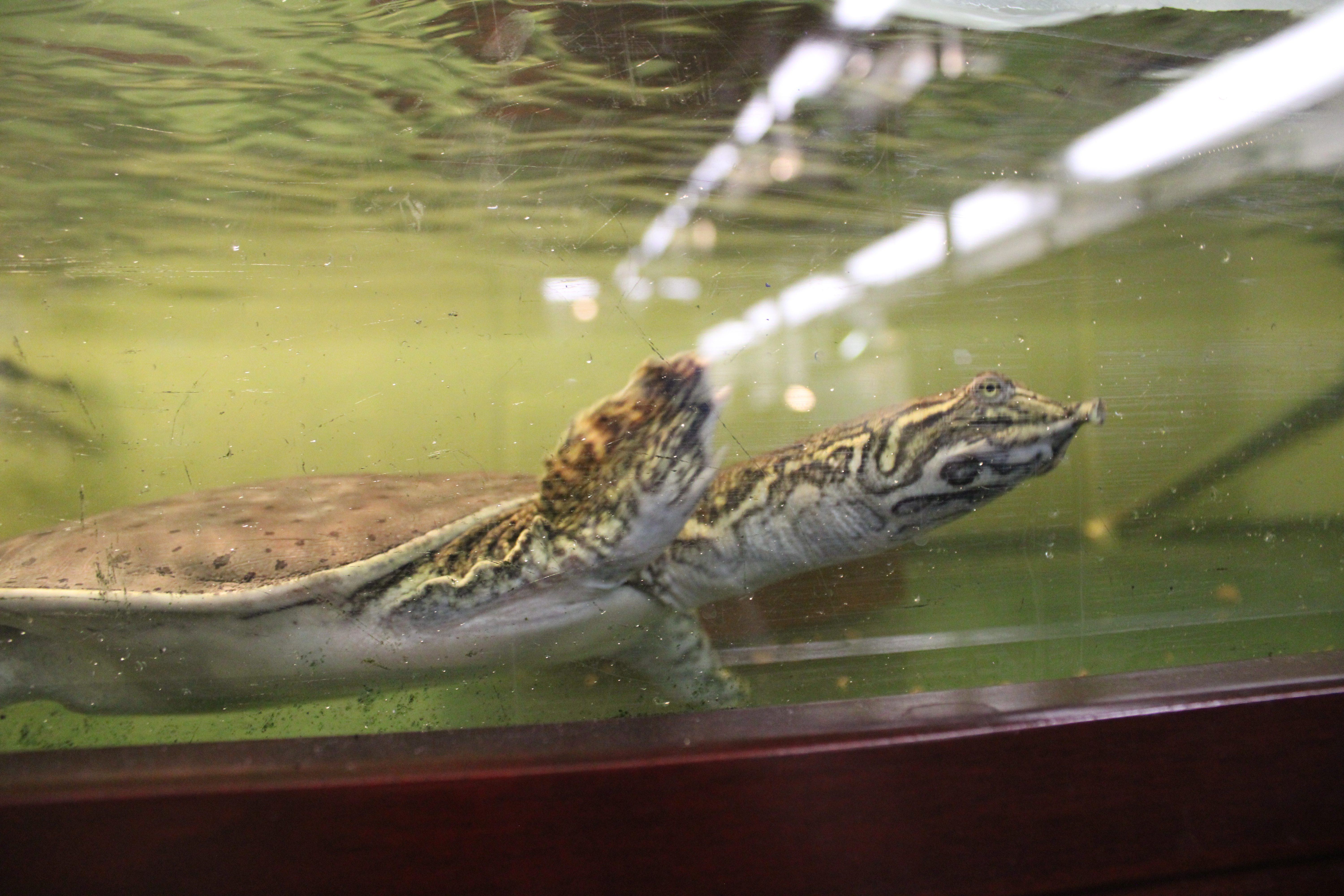
Spiny Softshell Turtle
Apalone spinifera
- Fun Fact: They are found in a wide variety of environments, being able to survive in 3 feet of water and also up to 33 feet of water.
- IUCN Status: Least Concern
- Range: Typically North and South America
- Threats: Habitat loss/fragmentation, pet trade, and pollution
- Diet: Omnivores
- Where they are in the lab:Just Moe, who is taken care of by a student.

Three Striped Mud Turtle
Kinosternon baurii
- Fun Fact: They like to wander around on land more than other mud turtle species.
- IUCN Status: Least Concern
- Range: Eastern United States
- Threats: Habitat loss, pet trade, and pollution
- Diet: Omnivores
- Where they are in the lab: Just Sebastion!
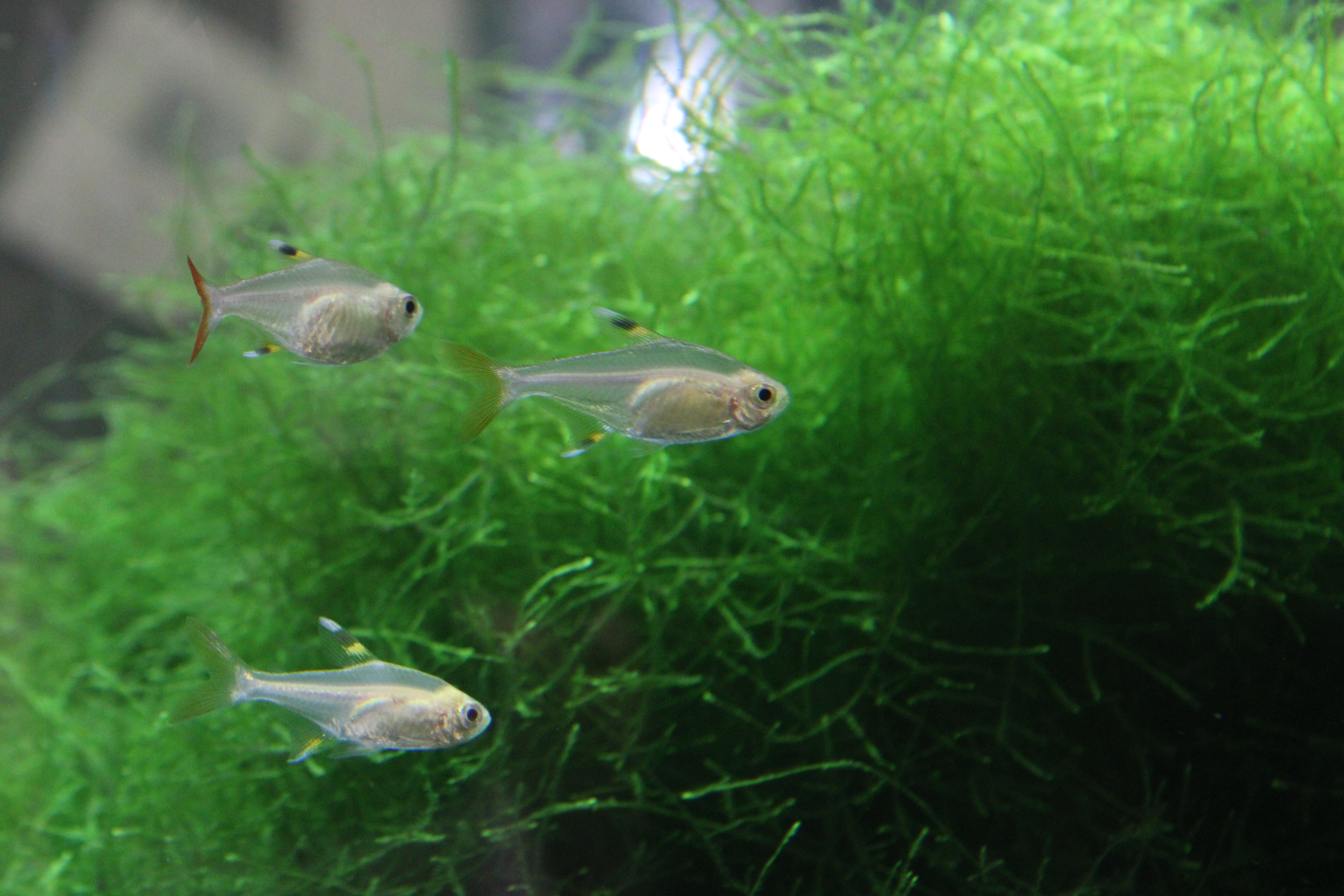
X-Ray Pristella Fish
Pristella maxillaris
- Fun Fact: The see-through nature of these fish is what gives them their name!
- IUCN Status: Least Concern
- Range: Coastal rivers of South America, more specifically the Caño Laguna Rafael near the Caicara del Orinoco basin in Venezuela
- Threats: Pollution, habitat loss due to urban development, and pet trade
- Diet: Omnivorous
- Where they are in the lab: They are in the front wall tank, which is taken care of by students.
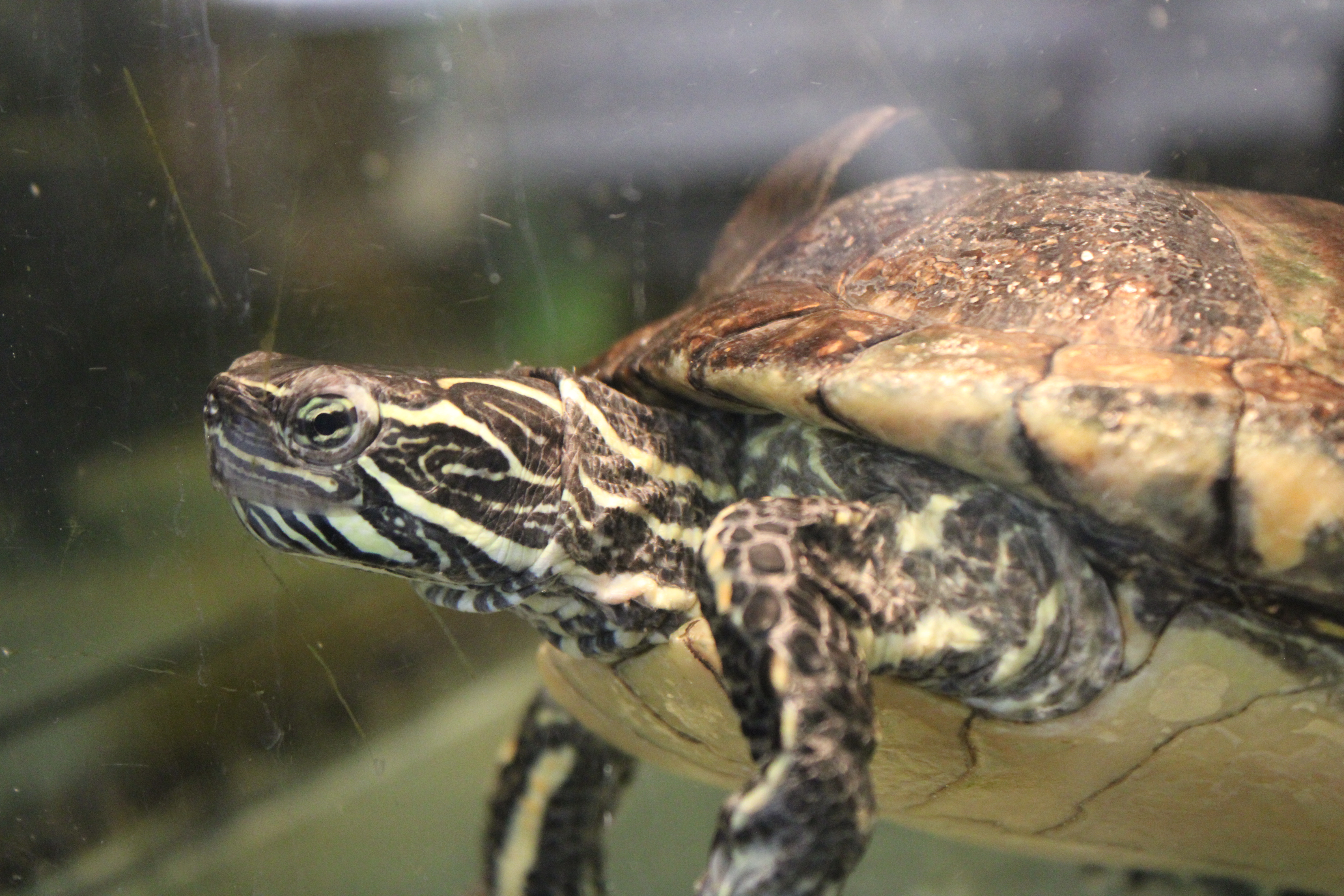
Southern Painted Turtle
Chrysemys picta dorsalis
- Fun Fact: This species is technically a subspecies of painted turtle, one that’s exact classification is still debated upon.
- IUCN Status: Least Concern
- Range: Primarily South-Central United States
- Threats: Habitat loss, pet trade, and water pollution
- Diet: Primarily omnivorous, but tend to prefer greens as they age
- Where they are in the lab: Just a few that are taken care of by students.


